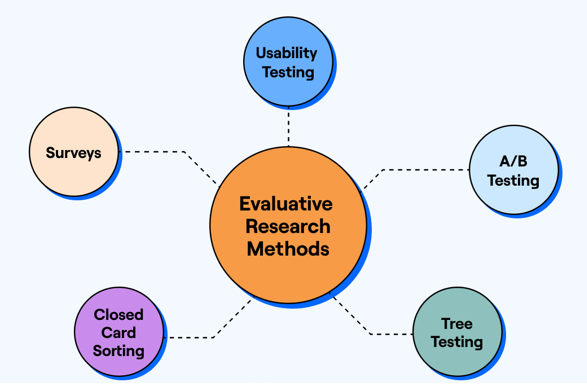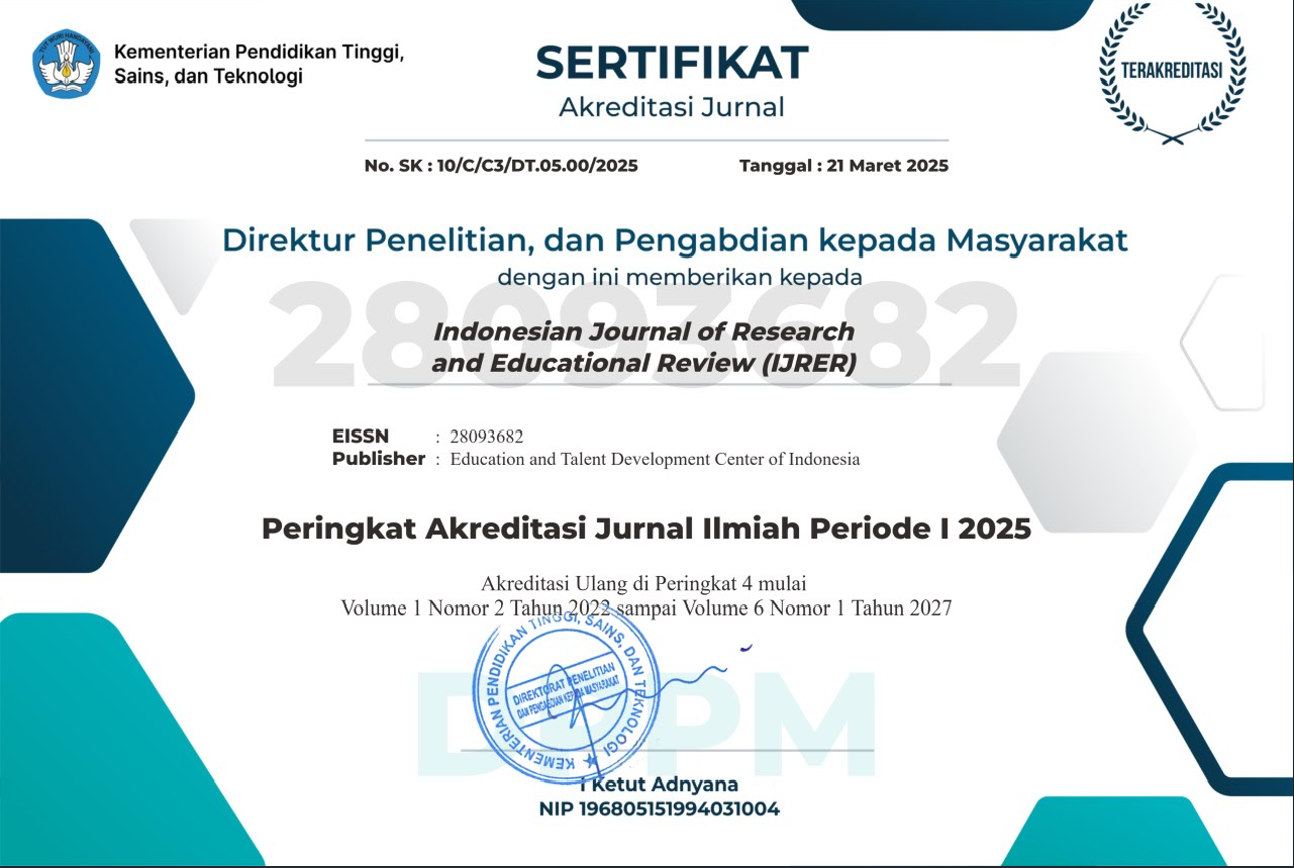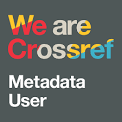Implementation of Guided Inquiry Learning Method in Creating Color Composition in Middle School Students
DOI:
https://doi.org/10.51574/ijrer.v4i4.3563Keywords:
Color Composition, Fine Arts Learning, Guided Inquiry, Middle School, Student CreativityAbstract
The background of this research stems from the need for a more active and student-centered learning approach to increase engagement, creativity, and understanding of color concepts, especially primary, secondary, and tertiary colors. This study aims to evaluate the application of the guided inquiry learning method in creating color compositions in the Arts and Culture (Fine Arts) subject in junior high schools in Takalar Regency. The methodology used in this study is an evaluative method with a qualitative approach. Data were collected through observation, interviews, and document analysis. The results of the study indicate that the application of the guided inquiry method significantly improves students' understanding of the concept of color and their ability to create color compositions independently and creatively. In addition, this method also encourages the students' active involvement, teamwork, and critical thinking skills. Although it requires more time and effective classroom management, this method has proven relevant and effective for application in fine arts learning at the junior high school level.
References
Abdel Meguid, E., & Collins, M. (2017). Students’ perceptions of lecturing approaches: traditional versus interactive teaching. Advances in medical education and practice, 229-241. https://doi.org/10.2147/AMEP.S131851
Al Mamun, M. A., & Lawrie, G. (2023). Student-content interactions: Exploring behavioural engagement with self-regulated inquiry-based online learning modules. Smart learning environments, 10(1), 1. https://doi.org/10.1186/s40561-022-00221-x
Ampartzaki, M. (2023). Utilizing creative and critical thinking to build knowledge and comprehension through inquiry-based and art-based learning: A practical tool for teaching local history in pre-primary and primary education. In Pedagogy, Learning, and Creativity. IntechOpen. https://doi.org/10.5772/intechopen.112688
Barthlow, M. J., & Watson, S. B. (2014). The effectiveness of process‐oriented guided inquiry learning to reduce alternative conceptions in secondary chemistry. School Science and Mathematics, 114(5), 246-255.
Billah, S. R. L., Faruq, A. K. I., & Thoriq, A. I. (2024). Urgensi Pendidikan Seni terhadap Perkembangan Aspek Berpikir Kognitif, Afektif, dan Psikomotorik Siswa. Jurnal Pendidikan: Riset dan Konseptual, 8(1), 181-186. https://doi.org/10.28926/riset_konseptual.v8i1.958
Davies, D., Jindal-Snape, D., Collier, C., Digby, R., Hay, P., & Howe, A. (2013). Creative learning environments in education—A systematic literature review. Thinking skills and creativity, 8, 80-91. https://doi.org/10.1016/j.tsc.2012.07.004
Ding, L., Zhao, Z., & Wang, L. (2023). Does online teaching strategy matter: exploring the effect of online teaching strategies on students’ ambidextrous innovation capacities based on the online teaching situation in China. Journal of Research on Technology in Education, 55(5), 817-840. https://doi.org/10.1080/15391523.2022.2038315
Dorfman, B. S., Issachar, H., & Zion, M. (2020). Yesterday’s students in today’s world—Open and guided inquiry through the eyes of graduated high school biology students. Research in Science Education, 50(1), 123-149. https://doi.org/10.1007/s11165-017-9683-6
FitzGerald, L., & Garrison, K. L. (2016). Investigating the guided inquiry process. In European Conference on Information Literacy (pp. 667-677). Cham: Springer International Publishing.
González, A. (2018). Turning a traditional teaching setting into a feedback-rich environment. International Journal of Educational Technology in Higher Education, 15(1), 1-21. https://doi.org/10.1186/s41239-018-0114-1
Ho, Y. R., Chen, B. Y., & Li, C. M. (2023). Thinking more wisely: using the Socratic method to develop critical thinking skills amongst healthcare students. BMC medical education, 23(1), 173. https://doi.org/10.1186/s12909-023-04134-2
Irianto, T. U., & Timang, N. J. (2024). Boosting Elementary Students’ Learning Interest: The Impact of The Question-And-Answer Method. Applied Linguistics: Innovative Approaches and Emerging Trends, 1(2), 94-110.
Kurniawan, W. (2025). Peran Seni Rupa dalam Pembentukan Karakter Kreatif dan Inovatif pada Generasi Muda: Sebuah Tinjauan Literatur. Communication & Design Journal, 1(2), 68-79. https://ojs.sains.ac.id/index.php/commdes/article/view/85
Kustyarini, K., Utami, S., & Koesmijati, E. (2020). The importance of interactive learning media in a new civilization era. European Journal of Open Education and E-Learning Studies, 5(2). http://dx.doi.org/10.46827/ejoe.v5i2.3298
Lazonder, A. W., & Harmsen, R. (2016). Meta-analysis of inquiry-based learning: Effects of guidance. Review of educational research, 86(3), 681-718.
Lee, V. S., Greene, D. B., Odom, J., Schechter, E., & Slatta, R. W. (2023). What is inquiry-guided learning?. In Teaching and learning through inquiry (pp. 3-16). Routledge.
Lu, K., Pang, F., & Shadiev, R. (2021). Understanding the mediating effect of learning approach between learning factors and higher order thinking skills in collaborative inquiry-based learning. Educational Technology Research and Development, 69(5), 2475-2492. https://doi.org/10.1007/s11423-021-10025-4
Price, E., Lau, A. C., Goldberg, F., Turpen, C., Smith, P. S., Dancy, M., & Robinson, S. (2021). Analyzing a faculty online learning community as a mechanism for supporting faculty implementation of a guided-inquiry curriculum. International journal of STEM education, 8(1), 17. https://doi.org/10.1186/s40594-020-00268-7
Oktavia, R. S. (2019). Implementation of guided inquiry-based learning model to improve students creativity thinking skill. JPPS (Jurnal Penelitian Pendidikan Sains), 9(1), 1756-1762. https://doi.org/10.26740/jpps.v9n1.p1756-1762
Ozdem-Yilmaz, Y., & Bilican, K. (2025). Discovery learning—jerome bruner. In Science education in theory and practice: An introductory guide to learning theory (pp. 173-187). Cham: Springer Nature Switzerland. https://doi.org/10.1007/978-3-031-81351-1_11
Rahman, M. H. (2017). Using discovery learning to encourage creative thinking. International Journal of Social Sciences & Educational Studies, 4(2), 98-103. https://doi.org/10.23918/ijsses.v4i2sip98
Sokołowska, D. (2018). Effectiveness of learning through guided inquiry. In The role of laboratory work in improving physics teaching and learning (pp. 243-255). Cham: Springer International Publishing. https://doi.org/10.1007/978-3-319-96184-2_20
Suardana, I. N., Selamet, K., Sudiatmika, A. A. I. A. R., Sarini, P., & Devi, N. L. P. L. (2019). Guided inquiry learning model effectiveness in improving students’ creative thinking skills in science learning. In Journal of Physics: Conference Series (Vol. 1317, No. 1, p. 012215). IOP Publishing.
Swanzy-Impraim, E., Morris, J. E., Lummis, G. W., & Jones, A. (2023). An investigation into the role of innovative learning environments in fostering creativity for secondary visual arts programmes in Ghana. Journal of Creativity, 33(2), 100054. https://doi.org/10.1016/j.yjoc.2023.100054
Tornee, N., Bunterm, T., Lee, K., & Muchimapura, S. (2019). Examining the effectiveness of guided inquiry with problem-solving process and cognitive function training in a high school chemistry course. Pedagogies: An International Journal, 14(2), 126-149.
Wen, Y., Wu, L., He, S., Ng, N. H. E., Teo, B. C., Looi, C. K., & Cai, Y. (2023). Integrating augmented reality into inquiry-based learning approach in primary science classrooms. Educational technology research and development, 71(4), 1631-1651. https://doi.org/10.1007/s11423-023-10235-y
Wulandari, I. G. A., Sa’dijah, C., As’ari, A. R., & Rahardjo, S. (2018). Modified guided discovery model: a conceptual framework for designing learning model using guided discovery to promote student’s analytical thinking skills. In Journal of Physics: Conference Series (Vol. 1028, No. 1, p. 012153). IOP Publishing. https://doi.org/10.1088/1742-6596/1028/1/012153

Downloads
Published
How to Cite
Issue
Section
License
Copyright (c) 2025 Hasniah S, Sukarman Sukarman, Muh. Saleh Husain

This work is licensed under a Creative Commons Attribution-ShareAlike 4.0 International License.









1.png)













